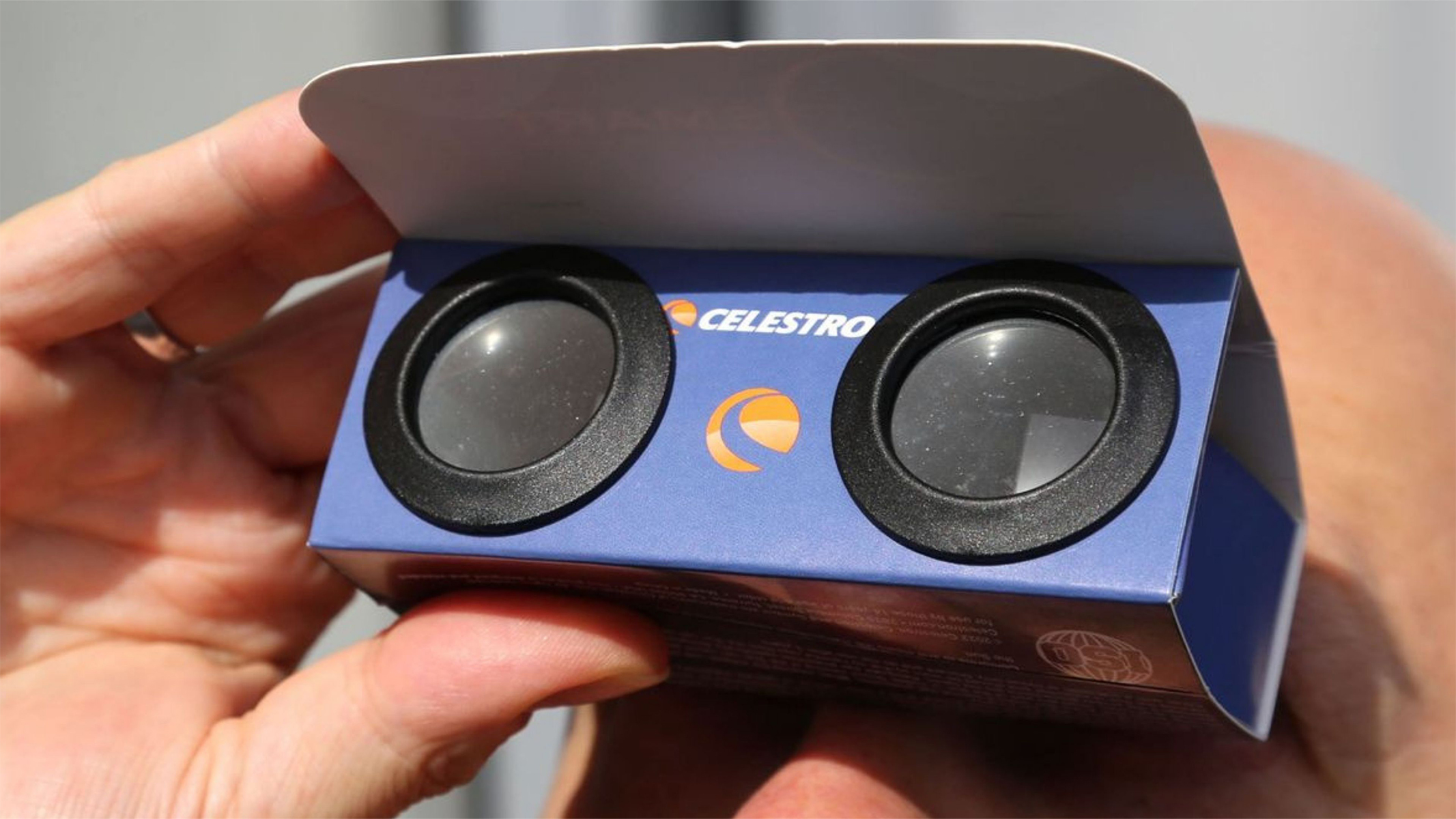
The North American total solar eclipse of April 8 2024 had eclipse-chasers and astrophotographers heading to their locations and finalizing their equipment setup. Checklists were checked off, and camera bags were packed for the big day. Here, you can learn where to buy and how to use your solar eclipse glasses for the next big event.
To safely witness and/or photograph the partial phases, you must be equipped with the right gear. That's where this guide comes in handy. From top-of-the-range solar eclipse glasses to unique new kinds of solar viewers to the ground-breaking Vaonis Hestia telescope and a build-it-yourself solar projector, we've found gadgets for every conceivable way of observing and capturing the eclipse. Whether you're an eclipse virgin or a devoted eclipse chaser, we guarantee there are products here that you will never have seen before.
Ahead of the next eclipse learn about the strange eclipse phenomena and total solar eclipse stages for a more detailed overview of what can happen when the moon blocks out the sun's light.
1. Use eye protection
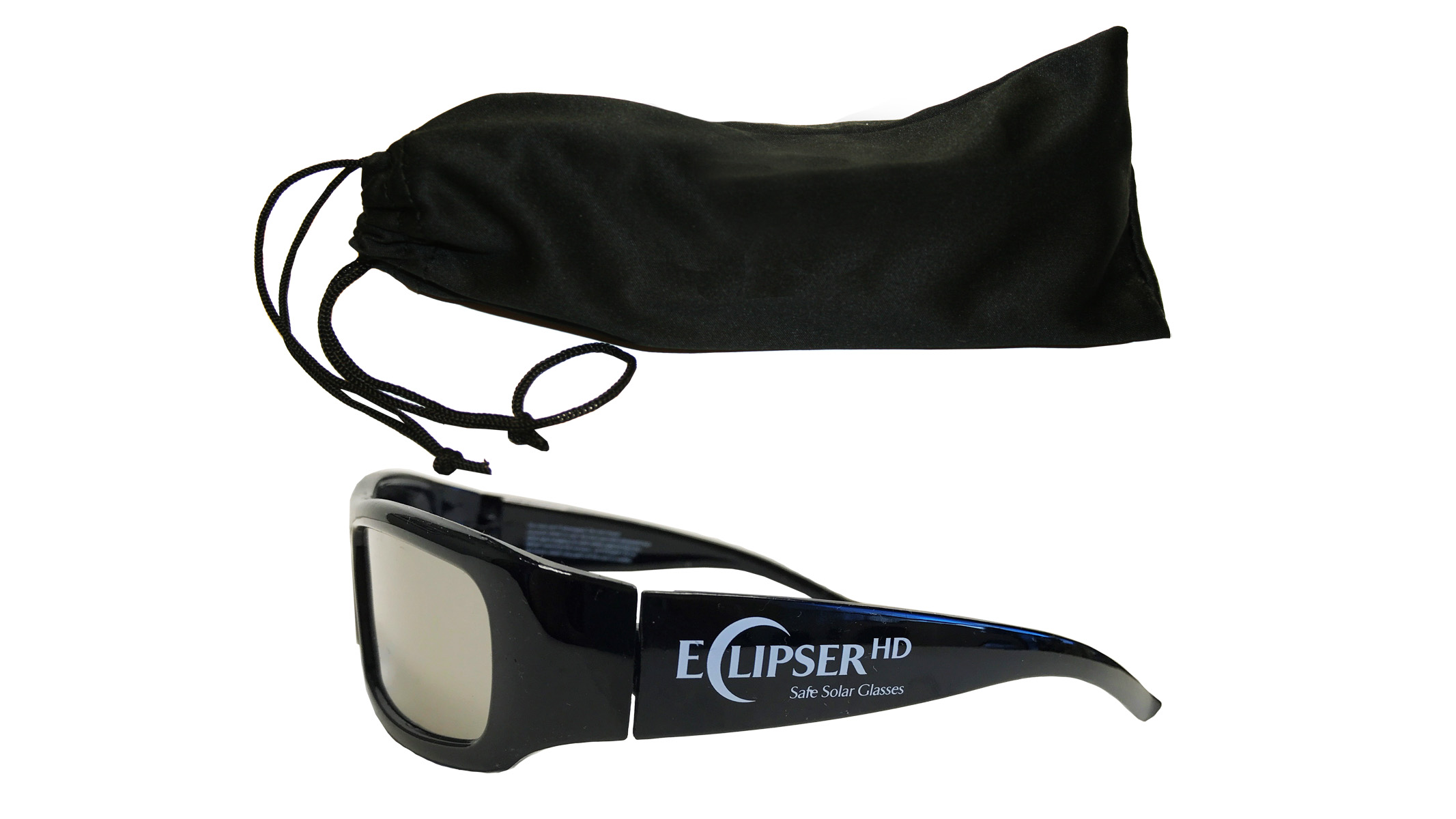
How can you tell an eclipse virgin from an eclipse chaser? The latter will wear a pair of Plastic Eclipser HD Glasses during the partial phases of eclipses. You should never look at the sun using sunglasses, but while these may look like sunglasses, they contain scratch-resistant black/silver polymer material made in the U.S. by American Paper Optics. Easier to wear than paper eclipse glasses and more durable, they give the sun a natural orange color while filtering out 100% of UV and IR light and 99.999% of intense visible light.
2.Grafix SafeShot solar viewer
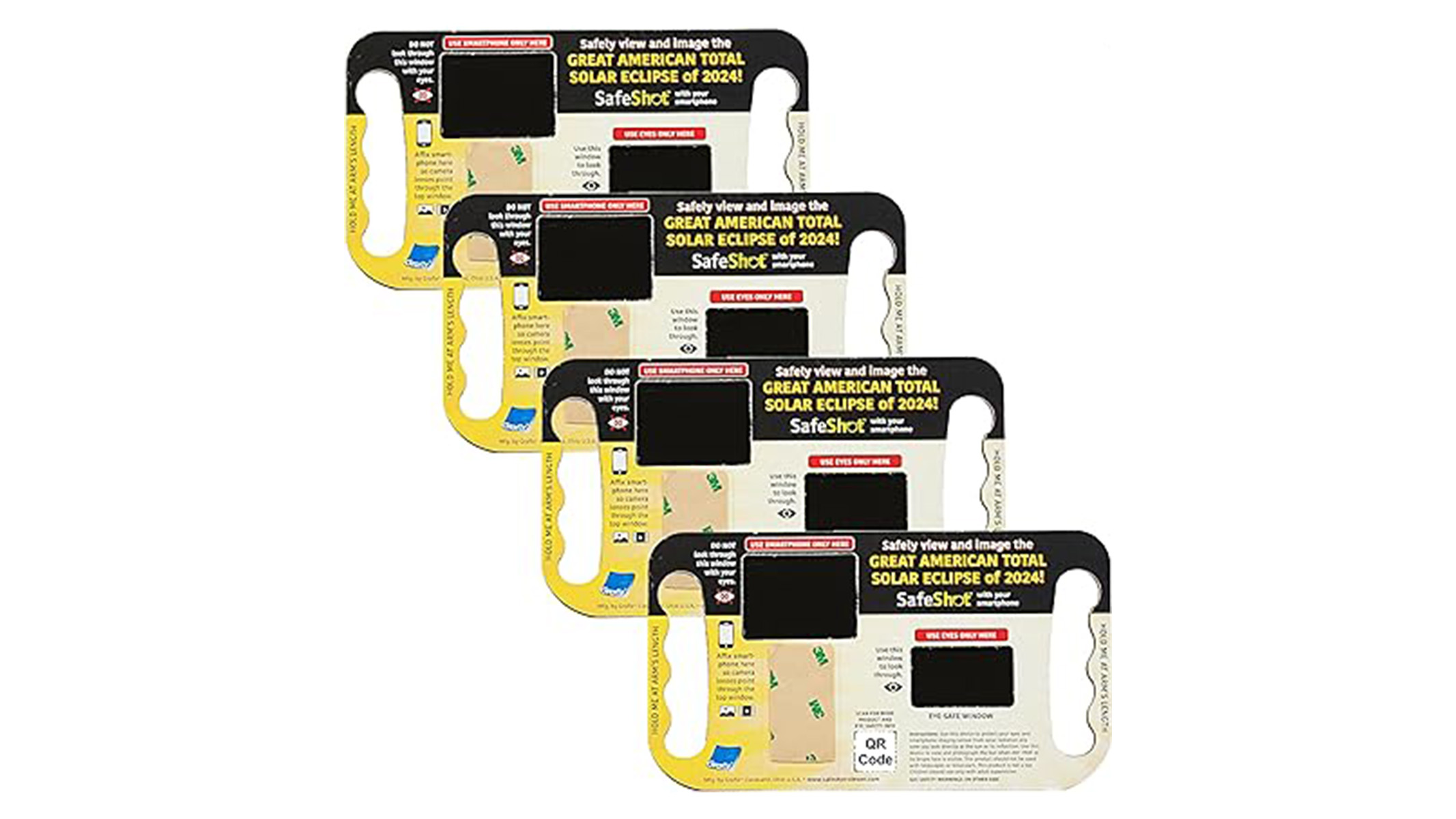
If you want to image the partially eclipsed sun, you can easily make a filter for your smartphone by cutting up an old pair of eclipse glasses and taping the solar film over your smartphone's camera. However, it's a messy business. Aimed at those who want to look at the eclipse while also photographing it, SafeShot puts a safe viewing window next to a photographic filter and a sticky pad for your smartphone, all within a cardboard frame that's easy to hold, so you can image the eclipse on your smartphone while you safely watch with your eyes. It's the brainchild of Grafix from Cleveland, Ohio.
3. Vaonis Hestia
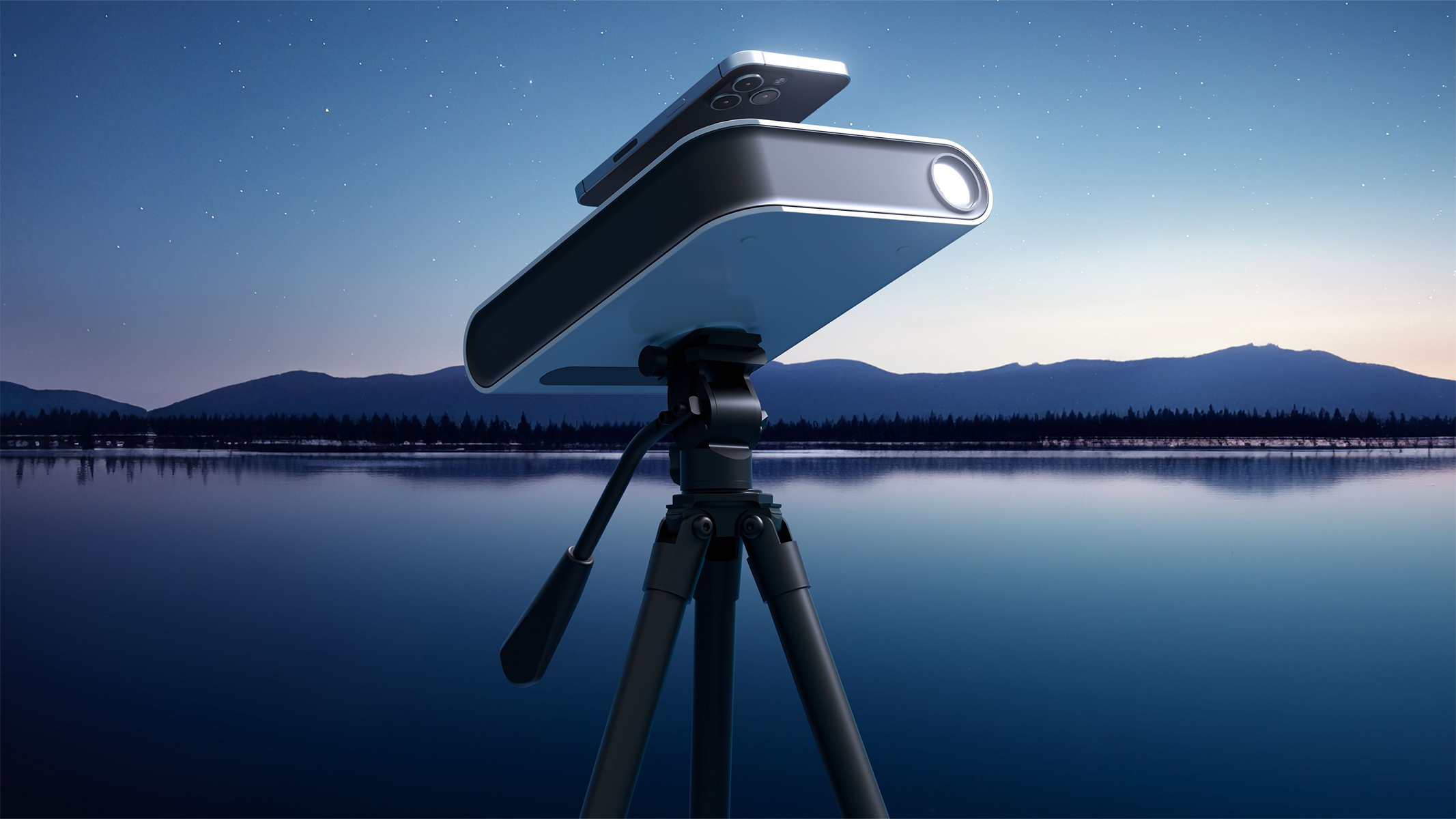
The first telescope to use a smartphone to capture images, Hestia comes from the company that makes the Vaonis Vespera Observation Station smart telescope (which can also be used to image solar eclipses). However, no bigger than a book and easily portable, Hestia — which requires a tripod — is being marketed specifically for the upcoming total solar eclipse.
To use it, you attach your smartphone to its magnetic top, align its camera with Hestia's eyepiece and take photos of the eclipse (as well as deep sky objects at night) using the free Gravity by Vaonis companion app. It's currently only available directly from Vaonis. In the meantime, you could also try the Vaonis Vespera II with the additional Vespera solar filter or a universal solar filter.
4. Celestron EclipSmart 2x Power Viewers

If you've planned a long trip to see a solar eclipse at great expense, why don't you give yourself some magnification? Compliant with ISO 12312–2, the Celestron EclipSmart 2x Power Viewers are essentially two lenses positioned on a fold-out box that gives you a closer look at the sun. Amid a 2x magnified, orange-tinted image, views are sharp and clear. The glasses fold up easily for travel too.
5. The Solar Projector

The projection method is the safest way to watch the moon's progress as it moves across the sun because they don't require any direct viewing of the sun. It's easy enough to make a pinhole projector, but this all-in-one kit is not only easy to assemble and unfold, but it also comes with an achromatic glass lens, one plane and two convex mirrors. If you plan to travel with it, use masking tape instead of glue to assemble it and remember to re-position the projector throughout the eclipse to prevent damage.
6. Daystar White Light Universal Solar Filters
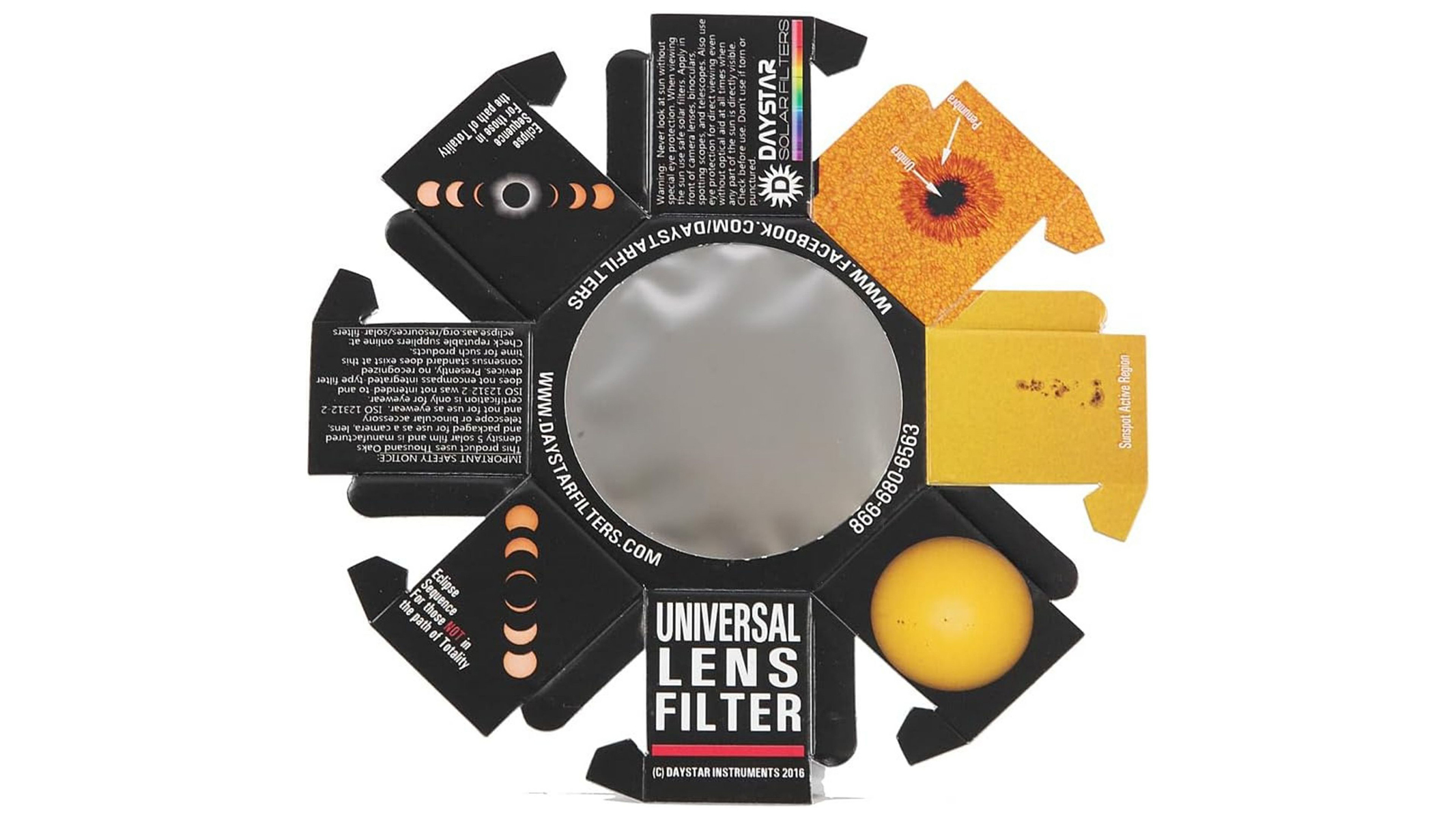
Glass solar filters are expensive, and you likely only want one for a very short time. Cue these affordable, foldaway cardboard-and-solar film filters that come in three sizes to fit over almost any camera lens — or the objective lens of a telescope or a pair of binoculars. They use white light solar film (which makes the sun look white) from Thousand Oaks incorporated into an easily foldable card with spring-folded fins to hold onto your camera lens or telescope. Find them as ULF50 (fits over outside diameters of 50-69mm), ULF70 (65-80mm) and ULF90 (80-90mm telescopes with outside diameters of 90-109mm).
7. Lunt SUNocular 8x32
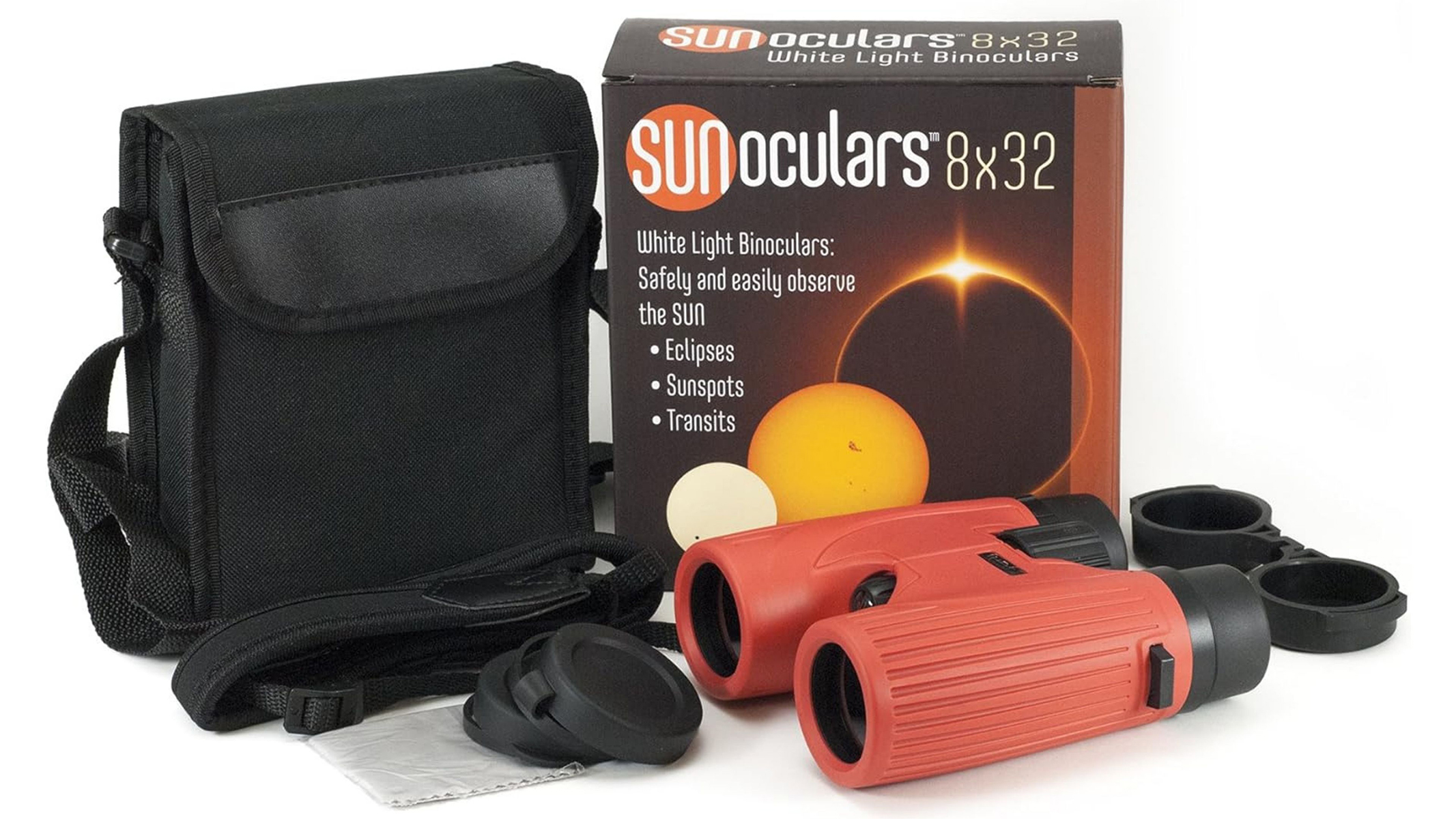
Solar-filtered binoculars are the way to go if you want to get a closer look at sunspots during the eclipse's partial phases. These rugged and waterproof solar binoculars have high-quality solar filters that block out harmful radiation so you can enjoy a clear and safe view of the sun's surface. Although the same company also markets a small, more portable pair (the SUNocular-Mini 6x30), these offer the best compromise between portability and magnification. Roof-prism binoculars, their front-mounted white light glass solar filters give the sun a whiteish-yellow look. They're available in red, yellow, blue and black.
When is the next solar eclipse?
You will want to get your gear ready ahead of the next solar eclipse, which will only be a partial and an annular solar eclipse on October 2, 2024, which will be visible from parts of South America and North America.







